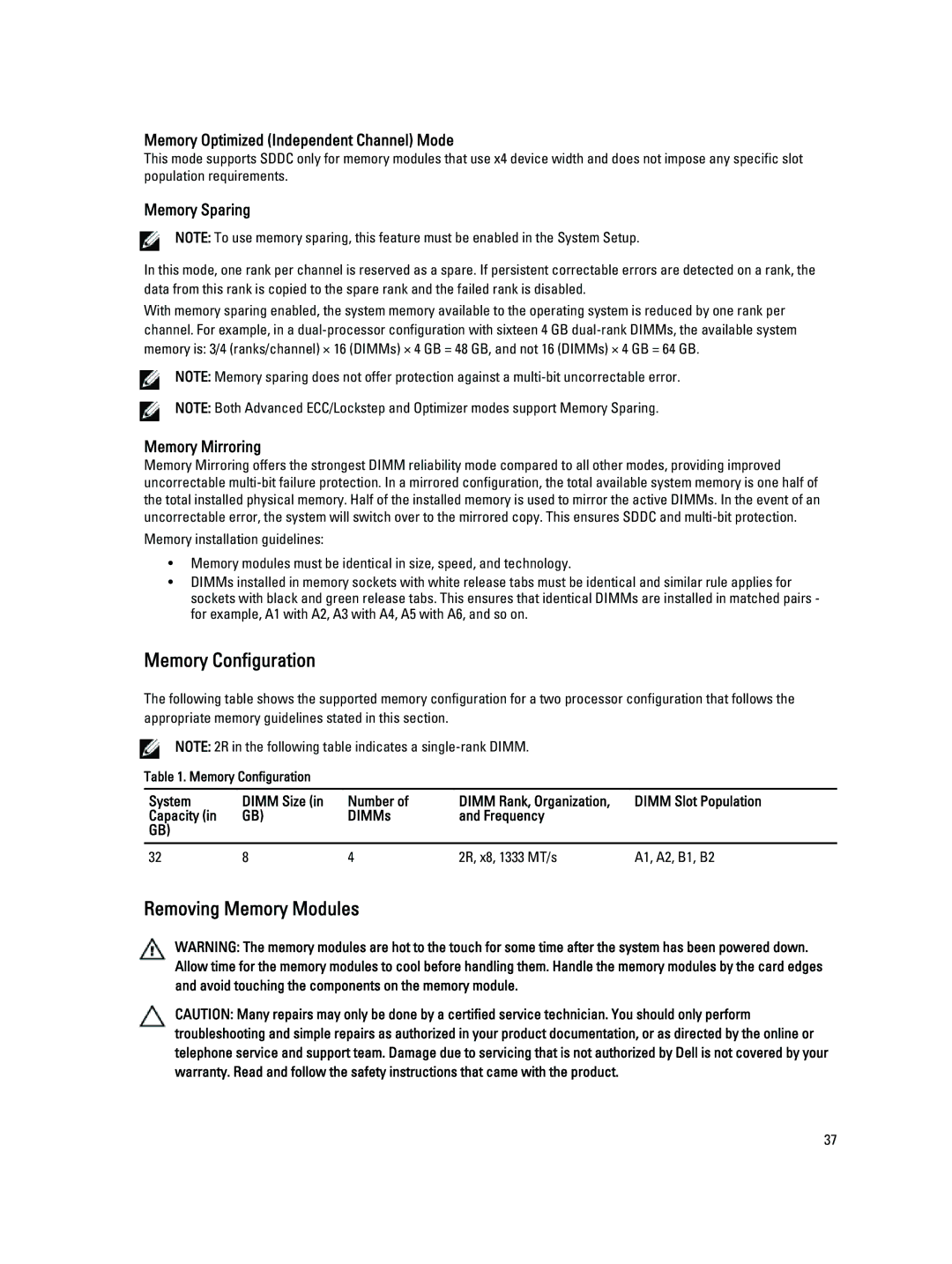
Memory Optimized (Independent Channel) Mode
This mode supports SDDC only for memory modules that use x4 device width and does not impose any specific slot population requirements.
Memory Sparing
NOTE: To use memory sparing, this feature must be enabled in the System Setup.
In this mode, one rank per channel is reserved as a spare. If persistent correctable errors are detected on a rank, the data from this rank is copied to the spare rank and the failed rank is disabled.
With memory sparing enabled, the system memory available to the operating system is reduced by one rank per channel. For example, in a
NOTE: Memory sparing does not offer protection against a
NOTE: Both Advanced ECC/Lockstep and Optimizer modes support Memory Sparing.
Memory Mirroring
Memory Mirroring offers the strongest DIMM reliability mode compared to all other modes, providing improved uncorrectable
Memory installation guidelines:
•Memory modules must be identical in size, speed, and technology.
•DIMMs installed in memory sockets with white release tabs must be identical and similar rule applies for sockets with black and green release tabs. This ensures that identical DIMMs are installed in matched pairs - for example, A1 with A2, A3 with A4, A5 with A6, and so on.
Memory Configuration
The following table shows the supported memory configuration for a two processor configuration that follows the appropriate memory guidelines stated in this section.
NOTE: 2R in the following table indicates a
Table 1. Memory Configuration
System | DIMM Size (in | Number of | DIMM Rank, Organization, | DIMM Slot Population |
Capacity (in | GB) | DIMMs | and Frequency |
|
GB) |
|
|
|
|
|
|
|
|
|
32 | 8 | 4 | 2R, x8, 1333 MT/s | A1, A2, B1, B2 |
Removing Memory Modules
WARNING: The memory modules are hot to the touch for some time after the system has been powered down. Allow time for the memory modules to cool before handling them. Handle the memory modules by the card edges and avoid touching the components on the memory module.
CAUTION: Many repairs may only be done by a certified service technician. You should only perform troubleshooting and simple repairs as authorized in your product documentation, or as directed by the online or telephone service and support team. Damage due to servicing that is not authorized by Dell is not covered by your warranty. Read and follow the safety instructions that came with the product.
37
